The Changing Places Equipment Guide outlines everything you need within your CP facility. Fitting your Changing Places toilet with the correct equipment is essential for two reasons; to ensure the facility is safe, usable, and practical, and to meet the requirements of British Standards 8300. Without the correct equipment, your toilet cannot be considered a Changing Places toilet.
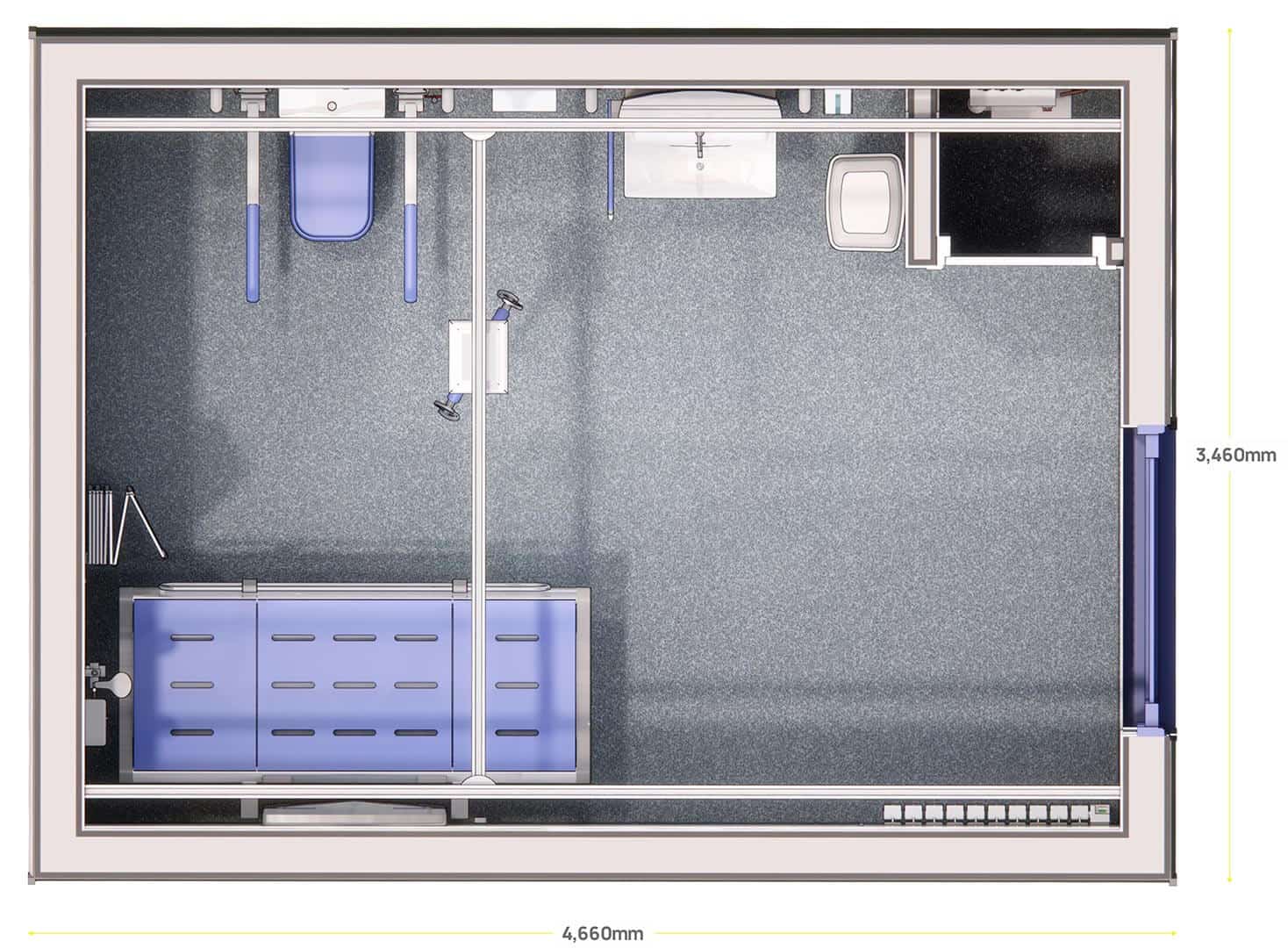
All the items listed in this section of the guide are essential but first, we will focus on the main, or key equipment pieces. These are the bigger items in a Changing Places toilet where there can often be a wide choice of models or manufacturers available.
-> Our modular Changing Places come with all required equipment
A toilet should always be a peninsula style to make transfers and assistance as easy as possible, a peninsula style toilet allows access to either side of the loo for an assistant, should a person need that. The toilet should be situated so that there is a space of at least 1000mm from the nearest wall and have a seat height of 480mm to make transfers from wheelchairs possible.
As the toilet must be comfortable, close coupled toilets are preferable as they provided a backrest and if they have a flat cistern, an integral colostomy shelf. In situations where a close coupled toilet can’t be used, a padded back support must be provided instead.
Toilet tissue should be provided so it is easy to access for the person seated on the loo, and an assistant.
A height-adjustable sink is ideal for a Changing Places toilet as it will provide both a wheelchair user and an assistant a safe way to wash their hands reducing the risk of strains or back injuries. If it isn’t possible to install a height-adjustable sink, a fixed height model must be installed at the correct height for a wheelchair user (720 – 740mm from the floor).
There are a lot of choices when it comes to height adjustable sinks, but all options will have flexible pipework which is usually hidden behind a panel – this keeps the area underneath the sink open so a wheelchair can meet the sink basin properly without having to reach or strain arms.
Again, hoists are another important piece of equipment where there is a wide range of choices available, but it is important to understand that not all hoist solutions are ideal for a Changing Places toilet.
Wherever possible a ceiling track hoist should be used which covers the entire room. This means the hoist can be used to transfer a person easily between different pieces of equipment in the room. A linear track hoist can be quite limiting as it may only provide an option to transfer from a wheelchair to a changing bench, or from a wheelchair to the loo. Mobile hoists are not ideal either as they can get in the way, be removed from the room, and may need to be charged externally.
All hoists should conform to BS EN ISO 10353 and a model should be chosen with the broadest range of sling connectors to ensure compatibility with most slings. To ensure as many people as possible can safely use the hoist, choose a model with a working limit of 200kg. It is also important to note that the ceiling must be appropriately structured to be able to operate the hoist safely and that the ceiling must also be at least 2.4 metres high to ensure there is sufficient space for the hoist to operate.
A height-adjustable adult-sized changing bench is vital in a Changing Places toilet. The ability to adjust the height means the bench can suit a wider range of needs – people can self-transfer from wheelchairs or be transferred with assistance or using the hoist. To keep assistants safe the bench can then be adjusted to a comfortable working height.
Benches can be either free-standing or wall-mounted so long as they are at least 1800mm long and 800mm wide with a minimum weight capacity of 200kg. You should also choose a model that has a comfortable surface that is easy to clean. Safety rails are also required so that they can be used when appropriate.
Although both freestanding and fold up benches are acceptable, there are more advantages to a freestanding bench. A freestanding bench means assistants can move around much easier and have access to both sides of the bed – especially important if a person has two assistants with them.
They can be moved around the room so offer more flexibility for transfers and are a much better option for Changing Places equipped with showers as they can be moved into or away from the shower area as needed. However, they do take up more space than a wall-mounted folding bench so if your Changing Places toilet is at the lower end of the required room size, you may want to consider wall-mounted.
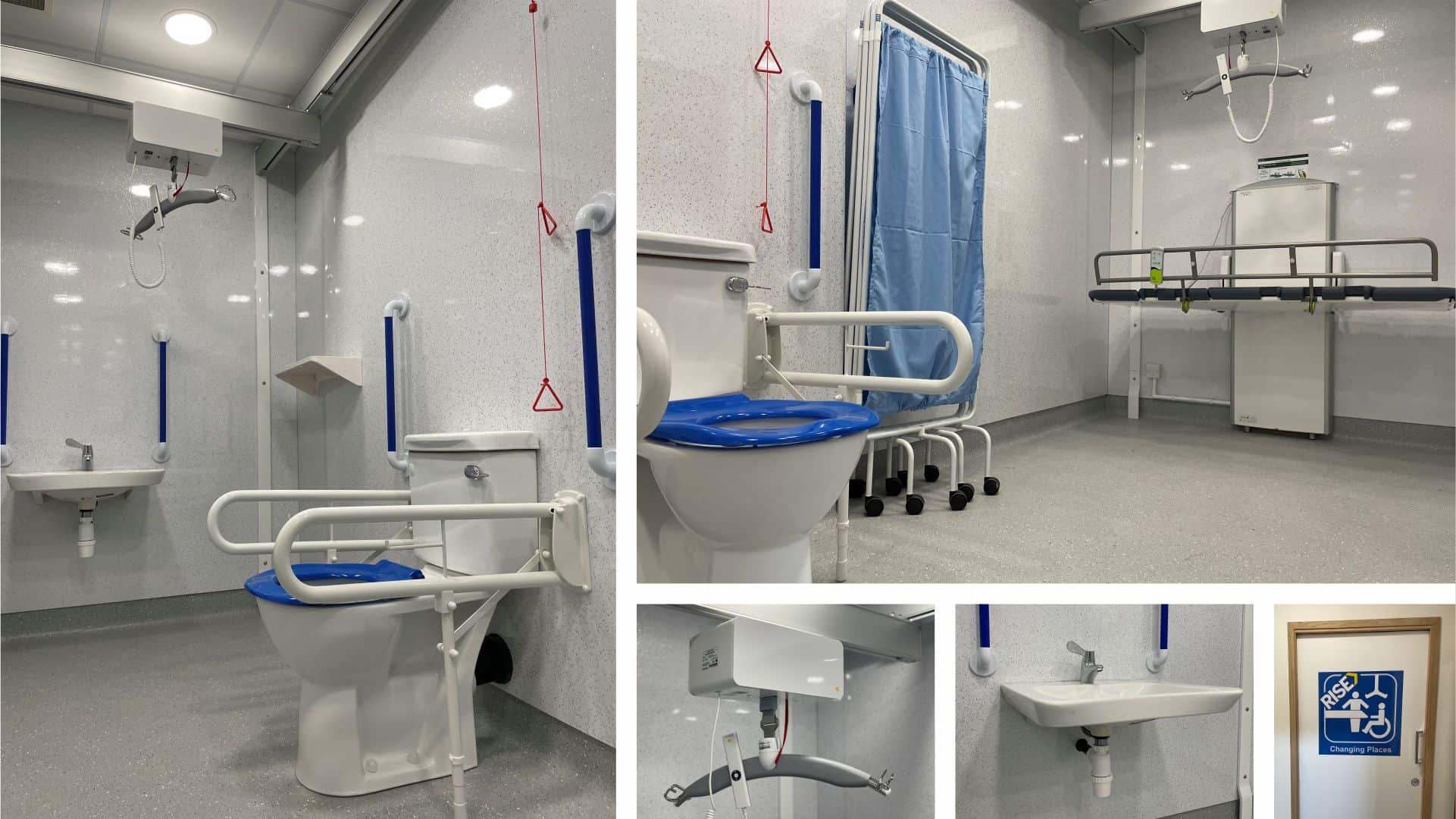
In addition to the main ‘big’ pieces of equipment, Changing Places toilets also require or should ideally have the following.
Support rails should be provided on either side of a toilet and fitting both fixed rails and drop-down rails will help the widest range of people. Some people may need fixed wall rails if they can use the toilet standing with support and drop-down rails provide support for people in a seated position. Dropdown rails are ideal as they can be folded against the wall when not in use allowing adequate space for hoist transfers.
Grab rails must be made from a suitable material, be fixed to a surface that can stand weight, and be fitted at specific heights and distances from the toilet itself.
All Changing Places should be equipped with a privacy screen between the toilet and the rest of the room. These can be freestanding screens or wall mounted retractable screens. Freestanding screens offer the most flexibility to users of the toilet.
Screens are used by people who may need assistance to get inside the toilet but are then able to use the loo without assistance. They can also be used by assistants who can’t leave the person they are attending outside the room. They help preserve everyone’s dignity so should always be provided.
Wide paper dispensers should be fitted near to the changing bench so an assistant can cover the bench before use, or access paper for cleaning or wiping surfaces. This ensures your facility stays as hygienic as possible and can also make chilly changing benches more comfortable.
Sink taps should be easy to use and uncomplicated to assist people who may have visual impairments or mobility issues. Where possible use a single mixer tap with a lever style handle. If separate taps must be used, ensure these are lever style and are clearly labelled hot and cold.
To ensure people can wash their hands thoroughly, a soap dispenser should be provided directly above the sink. This should be easy to operate with one hand (such as an automatic soap dispenser) and should be within easy reach of a person using a wheelchair.
Hand drying options come down to paper towels or a hot air dryer. Whichever option is installed it must be close to the handwashing sink and within reach for a wheelchair user. If you choose to install a hot air dryer, choose a quieter model as some high-speed dryers can be very loud and could cause distress.
Bins should be provided for both general waste and sanitary disposal. The sanitary bin should be large enough to hold adult-sized incontinence products and situated within easy reach of the toilet. If possible, the general bin should be a wall recess type as this reduced the risk of the bin becoming an obstruction.
Coat hooks are a small detail but are an important part of providing a hygienic, comfortable space. Toilets should be fitted with several hooks for jackets, coats or bags as a person may have several assistants accompanying them. Hooks should be provided at 1050mm and 1400 mm above the floor level to ensure they are accessible to everyone.
A mirror is another small detail that can make a big difference to a Changing Places toilet. A well-positioned mirror gives people the opportunity to check their reflection or adjust clothing before leaving the toilet. The mirror should be wall-mounted and at least 1000mm high and 600mm wide.
The lower edge should not reach the floor as this could create the illusion of a door or opening for people with visual impairments. The lower edge should also not be any further than 600mm from the floor so that people using wheelchairs can use it.
Although sanitary product vending machines are not required in a Changing Places toilet they are recommended for convenience and to promote independence. Where possible choose smaller, slimmer coin-operated machines that will not be obstructive to people moving around the room. The machines should be situated between 750mm and 1200mm above floor level, so it is accessible to everyone.
A sling is used in conjunction with a hoist and although they are necessary if a person wants to use the hoist in your Changing Places toilet, you do not need to provide these.
When a person uses a sling and hoist, they will have been individually assessed and provided with a sling that is specific to their needs. Although some people will have their slings with them when they are out on a day trip, for example, it is still important to state that anyone wishing to use the toilet should bring their own sling.
It’s also important to think about compatibility when choosing an attachment type for your hoist as there are two types of sling attachments available – click type and a loop type. We recommended using a loop type attachment as these are compatible with a wider range of slings than click type.
Showers are not required in Changing Places but there are many situations where a shower can be incorporated quite easily and make a big difference to peoples lives. For example, at swimming baths and leisure facilities – having a shower/Changing Places in one private room gives more people the opportunity to participate in activities.
If you do have a combined Changing Places shower room, the best room configuration positions the shower away from the door to avoid the entrance to the room becoming wet. To ensure the showering facilities can be used by a range of people we recommend providing a freestanding changing bench and a shower seat. Shower seats should be fixed to the wall for safety reasons, but a folding chair can be provided to save space and provide room for the changing bench to be used in conjunction with the shower.
In the shower area itself, the floor must be non-slip and people shouldn’t have to step into the shower – the floor should be continuous. Drains should be recessed into the floor with a low profile, so they don’t become a trip hazard.
The shower should be wall-mounted between 750mm and 1000mm above the floor level so that it is accessible to wheelchair users and assistants. It is also recommended that a long shower hose is used to enable assistants to move around a changing bench with the showerhead.
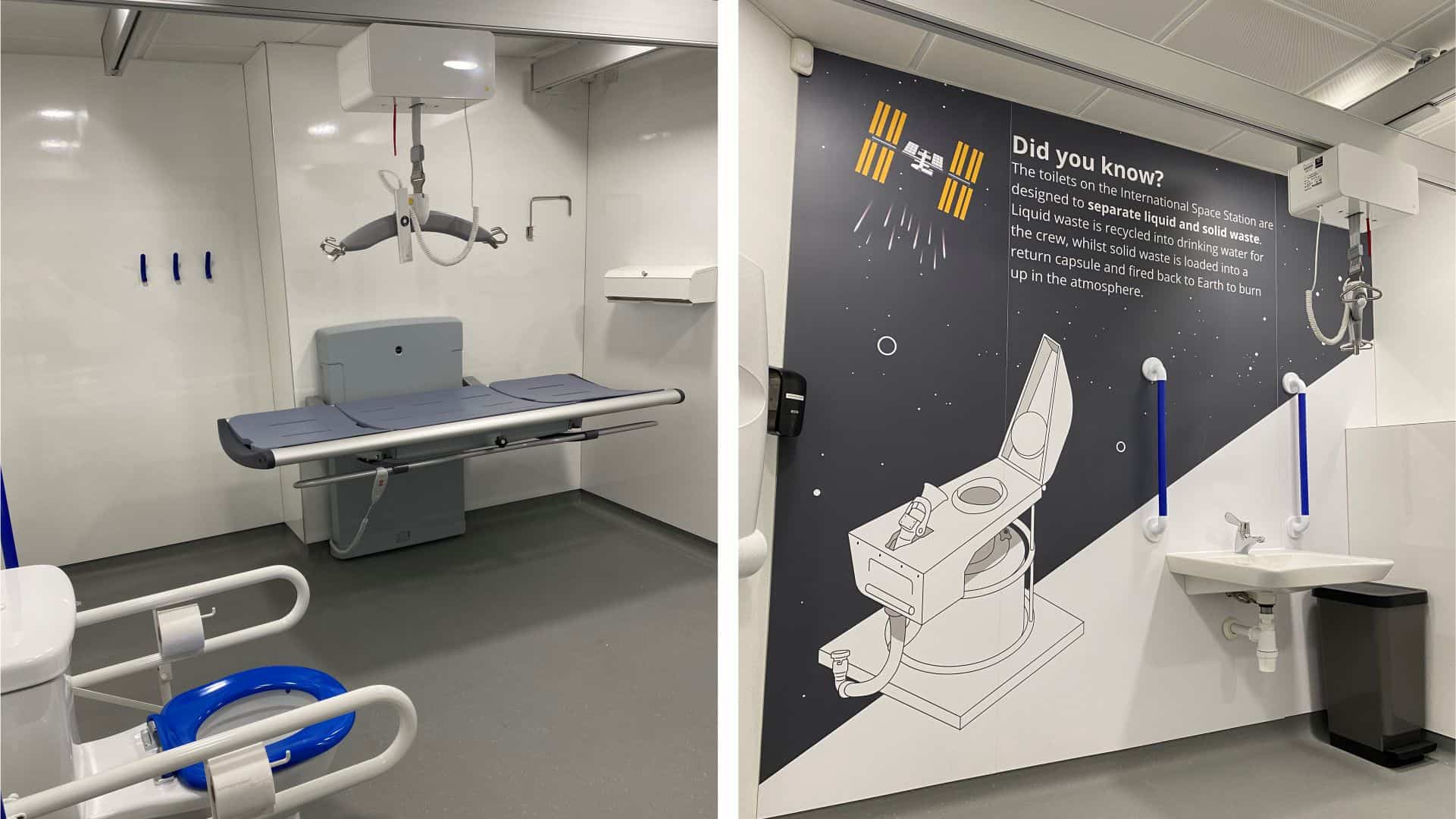
When you choose us to install your Changing Places toilet the worry of checking you have the correct equipment is alleviated as each of our facilities, both modular pods and adaptions, automatically come with the equipment required to meet BS 8300.
In addition to ensuring you have all the correct equipment, configured the correct way, we also have different equipment choices for you to choose from – from standard budget-friendly options to premium equipment. And, because we’ve fitted so many toilets in different situations, we’re well placed to make recommendations based on our experience. We’re not tied into any equipment manufacturer so our recommendations are truly based on what we will know will work best.

Call 07729 224 738 or email hello@riseadapt.co.uk
We’re open Monday to Friday, 08:00-18:00.
To learn more about Changing Places, why not download our brochure or attend one of our monthly online seminars.
Call: 07729 224 738
email: hello@riseadapt.co.uk
08:00-18:00, Mon-Fri
To learn more about Changing Places, why not download our brochure or attend one of our monthly online seminars.
Please submit your details to receive further information about our modular home extensions…
Don’t forget to check your ‘junk’ folder if you don’t immediately receive your download.
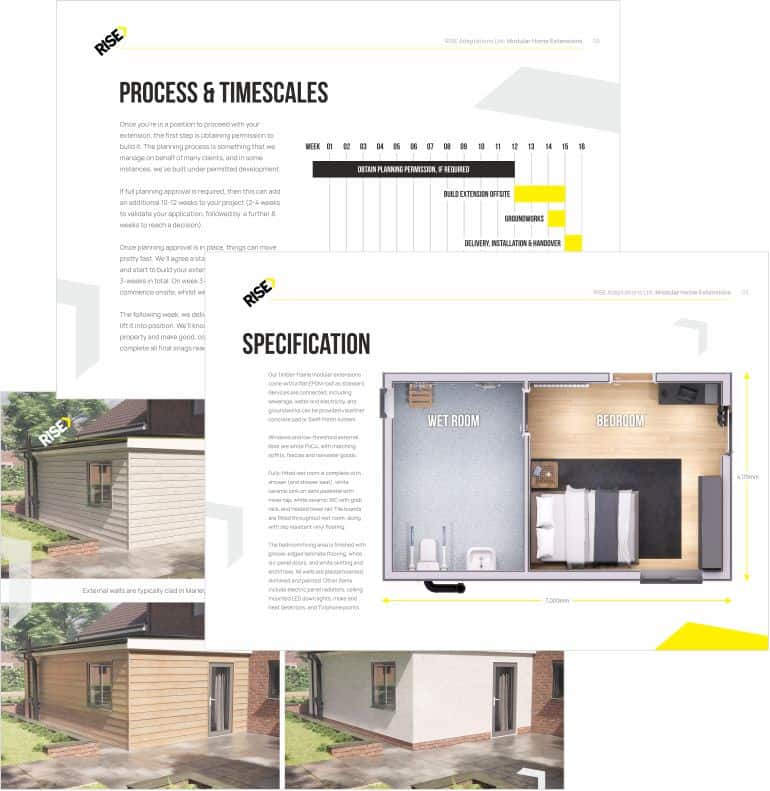
Please submit your details to receive further information about our sensory rooms…
Don’t forget to check your ‘junk’ folder if you don’t immediately receive your download.
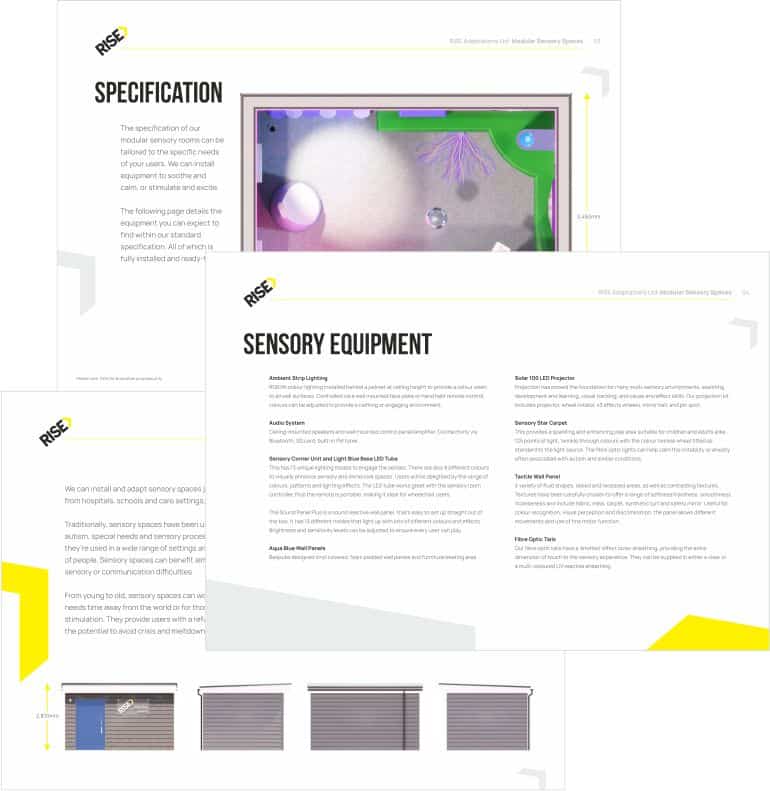
Please submit your details to receive further information about our Changing Places facilities…
Don’t forget to check your ‘junk’ folder if you don’t immediately receive your download.
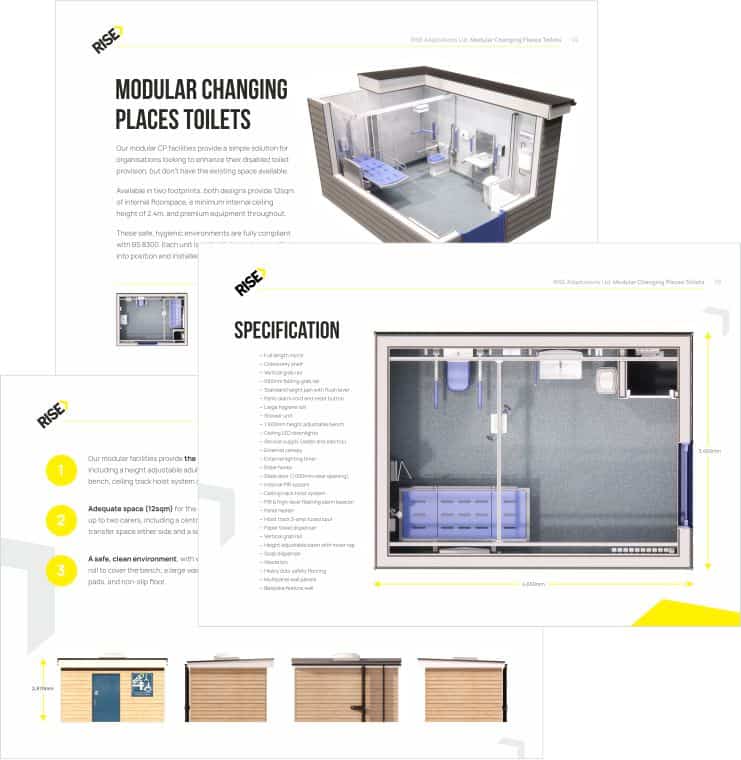
Send us a quick message via the form below and a member of the RISE team will be in contact a.s.a.p…